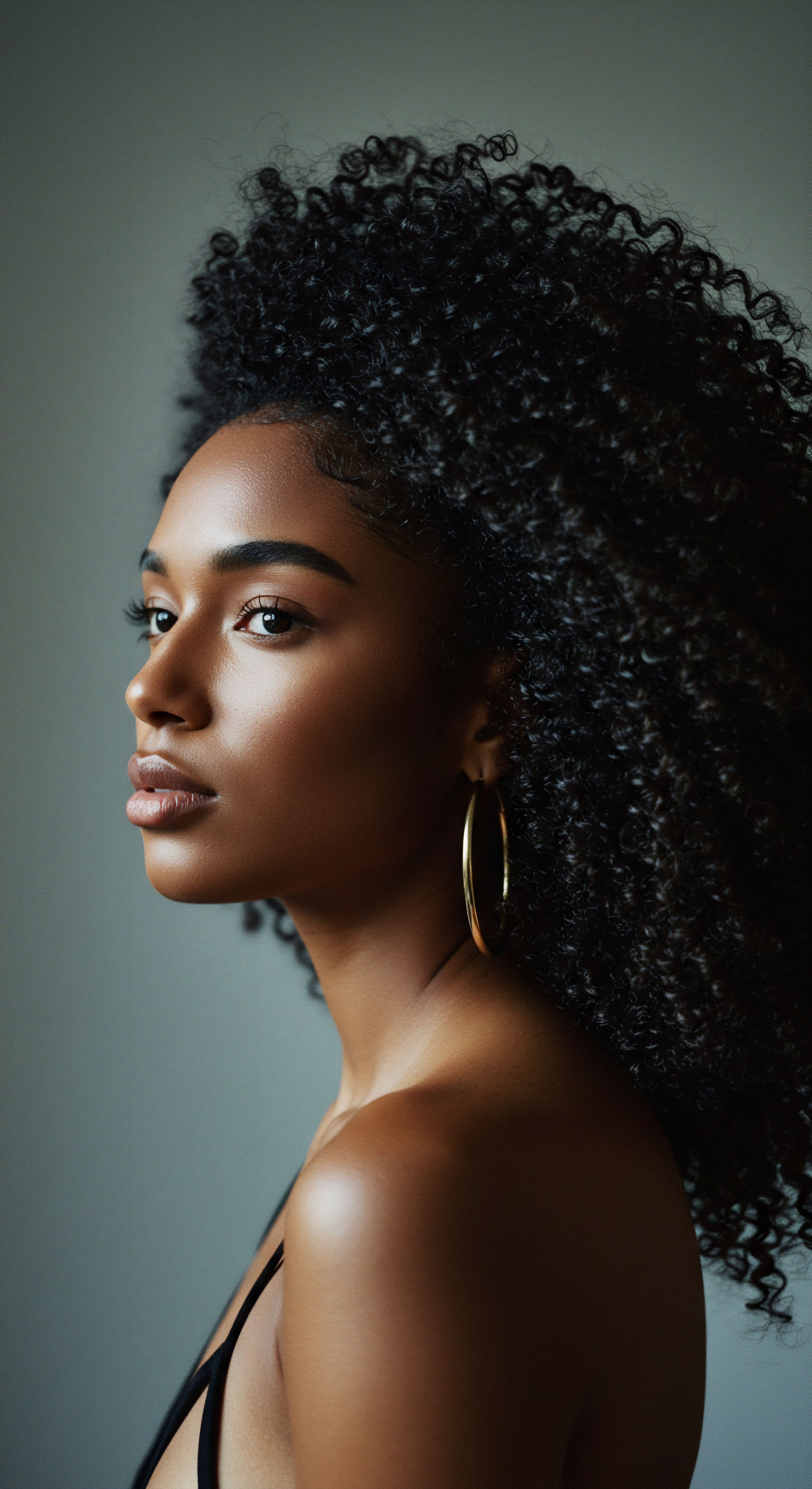
Roots
The journey of understanding our hair, particularly the intricate dance of coils, often begins with a whisper of curiosity. We might find ourselves observing how water beads on one strand, yet vanishes into another, or how a cherished cream seems to sit atop the hair rather than melting into its very being. This quiet observation, often dismissed as mere happenstance, is in fact a profound connection to a fundamental characteristic of our hair ❉ its porosity. Porosity, at its heart, describes the hair’s inherent capacity to absorb and retain moisture and other substances.
It is a dialogue between the hair fiber and the world around it, a conversation dictated by the outermost layer of each strand. For those with coiled hair, this conversation holds particular significance, shaping not only how products behave but also how we care for our crowns.
The hair cuticle, often likened to the shingles on a roof, forms this protective outer shield. Its condition—whether tightly closed, slightly raised, or significantly lifted—governs the passage of water and other molecules into the hair’s inner layers, the cortex and medulla. This structural arrangement is not a fixed, unchanging attribute.
While genetics certainly lay a foundational blueprint, environmental exposures, styling practices, and chemical treatments all play a role in altering this delicate balance over time. Understanding this dynamic interplay allows for a more attuned approach to hair care, moving beyond generic advice to a personalized wisdom that truly serves our unique coils.
Hair porosity, the hair’s ability to absorb and retain moisture, is determined by the cuticle’s condition and significantly influences product absorption for coils.
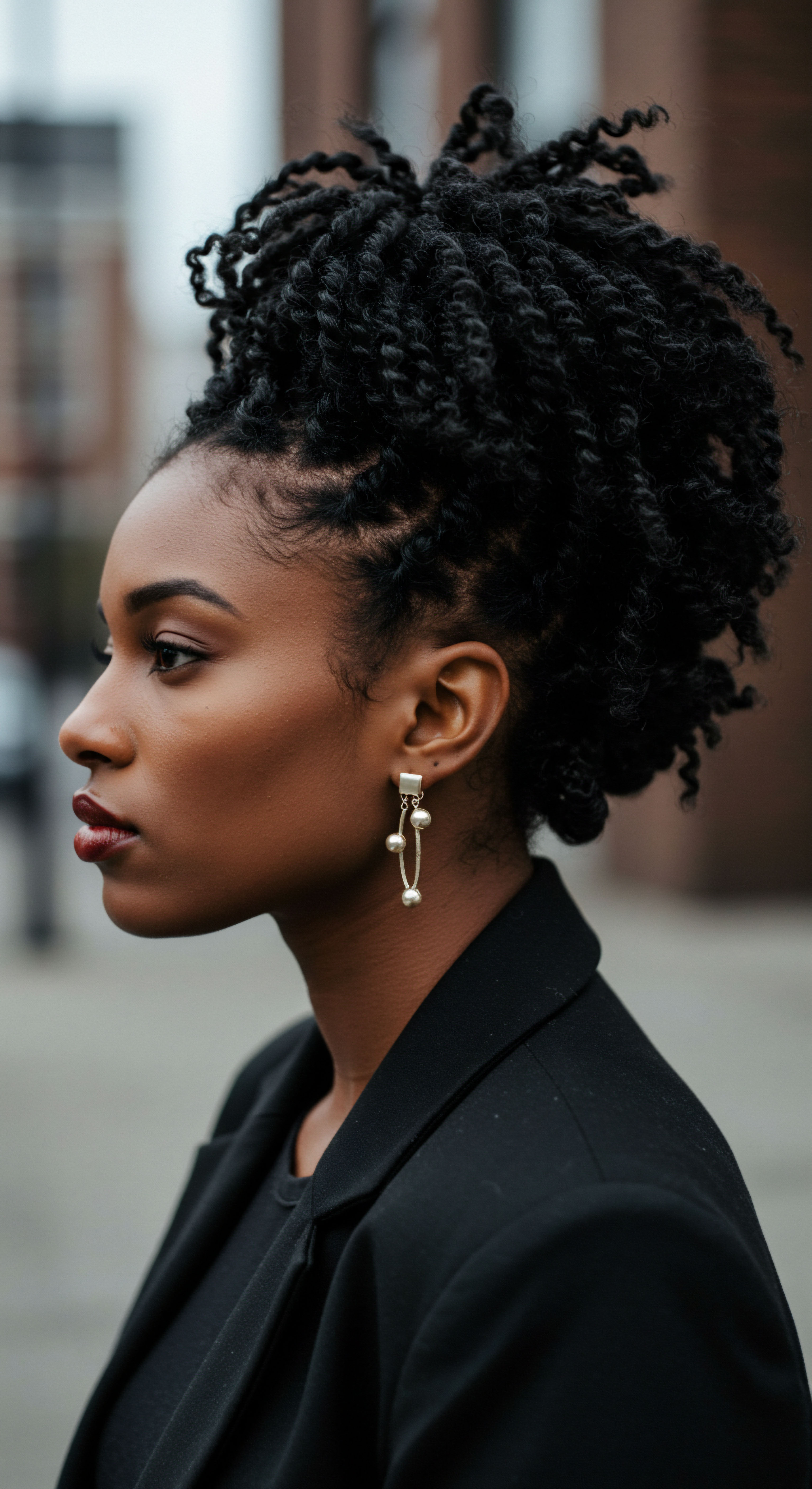
What Constitutes Hair Porosity
At the microscopic level, hair porosity is a direct reflection of the cuticle’s state. When these scales lie flat and compact, moisture finds it challenging to enter, resulting in what is commonly known as Low Porosity hair. Such hair often feels smooth to the touch and appears shiny, yet it can be resistant to getting fully wet and takes a longer time to dry. Products may seem to sit on the surface, leading to a sense of buildup rather than deep nourishment.
Conversely, when the cuticle scales are lifted, chipped, or have gaps, the hair exhibits High Porosity. This structure allows moisture to enter with ease, but it also escapes just as quickly. High porosity hair can feel rough, appear dull, and is often prone to frizz and tangling, as it struggles to hold onto the hydration it so readily accepts.
Between these two extremes lies Normal Porosity, where the cuticle layers are balanced, allowing for a steady absorption and retention of moisture. This hair type generally responds well to a variety of products and styling methods, striking a harmonious balance. However, it is worth noting that a single head of coiled hair may exhibit varying porosity levels across different sections or along the length of individual strands, particularly with older, more weathered ends. This variation necessitates a nuanced approach, acknowledging the multifaceted nature of textured hair.
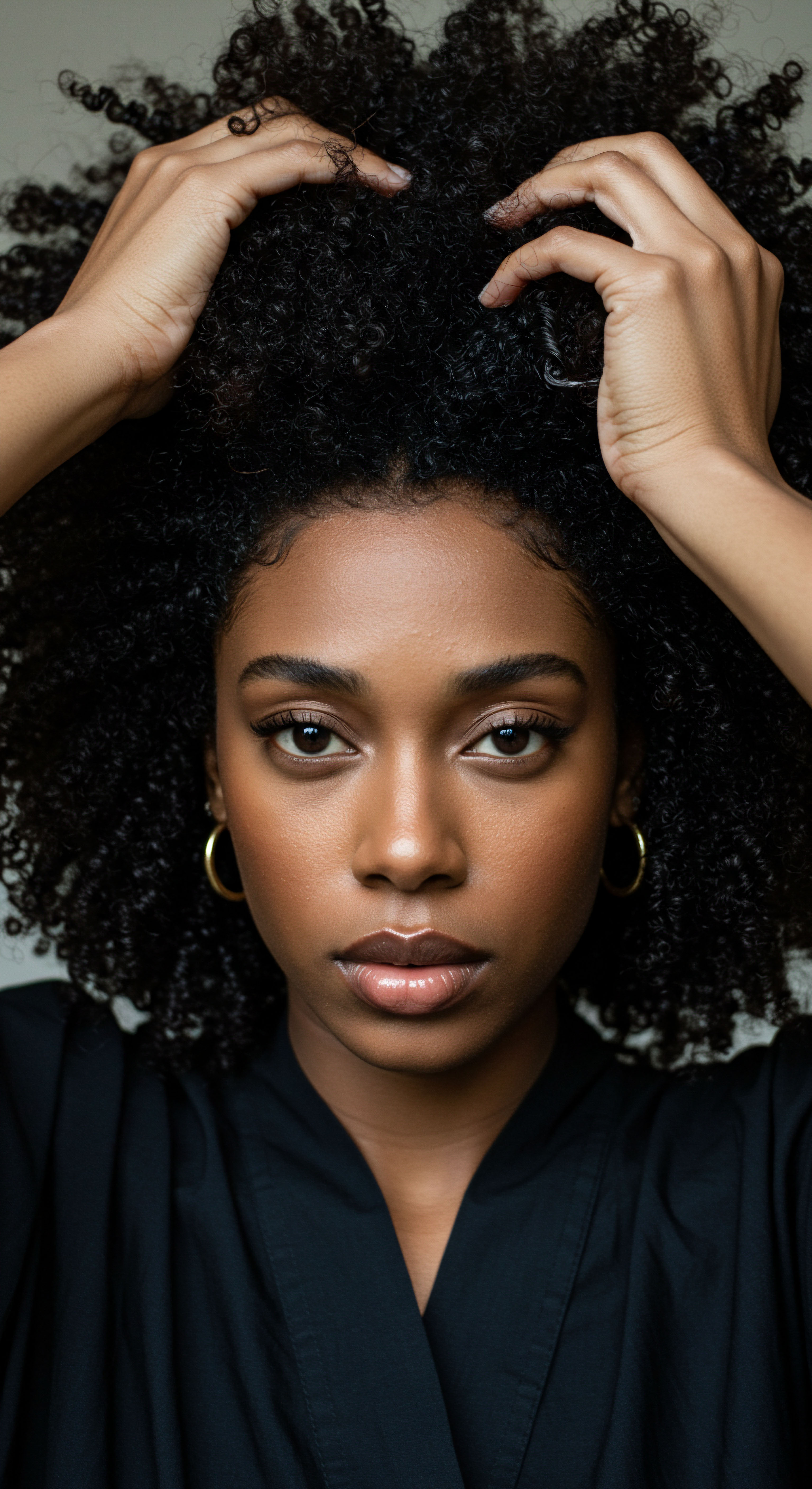
The Cuticle’s Role in Product Penetration
The cuticle’s architecture directly dictates the pathways available for product absorption. For low porosity hair, the tightly bound cuticle acts as a formidable barrier. Molecules from conditioners, oils, and styling creams must work harder to penetrate beyond the surface.
This is why lighter, water-based products are often recommended, as they possess smaller molecular sizes that may more readily find their way through the compact cuticle layers. The presence of the F-layer, a thin lipid-based coating on virgin hair, further contributes to its hydrophobic nature, repelling water and slowing absorption.
In contrast, high porosity hair, with its open cuticle, offers less resistance. Products are absorbed rapidly, sometimes almost too quickly, leading to the sensation that hair is “drinking” up everything applied. While this might seem advantageous for absorption, the challenge lies in retention.
The very gaps that permit easy entry also allow moisture to evaporate rapidly, leaving the hair feeling dry again shortly after application. This often calls for heavier, richer products that can help seal the cuticle and provide a more lasting protective layer.
The internal structure of the hair, particularly the cell membrane complex (CMC) between cuticle cells and the cortex, also plays a role in how substances move within the hair fiber. This continuous structure is considered a significant pathway for the penetration of molecules, with studies indicating that hydrophilic molecules, such as certain dyes, may primarily pass through the protein-rich δ-layer within the CMC.

Ritual
Stepping into the daily practice of caring for coiled hair requires a mindful consideration of porosity, a characteristic that shapes every interaction with our strands. It is a shift from simply applying products to understanding how those products truly serve the hair’s unique structure. The wisdom gathered from generations of textured hair care, alongside modern scientific understanding, guides us in creating rituals that honor the hair’s intrinsic nature, allowing products to perform their intended work rather than merely sitting on the surface or evaporating too quickly.

Tailoring Care to Porosity Levels
For coils with Low Porosity, the approach is often one of gentle persuasion. The tightly closed cuticle, while protective, can be resistant to moisture. This means that preparing the hair to receive product is paramount.
- Warm Water ❉ Begin any styling session with warm water. The gentle heat helps to slightly lift the cuticle layers, creating a more receptive surface for conditioners and stylers.
- Lightweight Products ❉ Opt for water-based formulas and products with smaller molecular structures. Ingredients such as coconut oil, jojoba oil, and panthenol are often favored as they are less likely to sit on the hair and cause buildup.
- Heat Application ❉ When deep conditioning, the application of gentle heat, perhaps from a steam cap or hooded dryer, can significantly enhance product penetration. This temporary opening of the cuticle allows nourishing ingredients to reach the cortex more effectively.
- Clarifying ❉ Regular clarification is a cornerstone for low porosity coils to prevent product accumulation that can weigh down the hair and hinder moisture absorption.
Conversely, coils with High Porosity, while readily absorbing moisture, face the challenge of retention. The focus here shifts to sealing and strengthening.
- Layering Products ❉ Employ a layering approach, often following the LOC (Liquid, Oil, Cream) or LCO (Liquid, Cream, Oil) method, to seal in moisture. A leave-in conditioner or hydrating mist provides the initial hydration, followed by an oil or butter to create a protective barrier.
- Protein Treatments ❉ Regular, but not excessive, protein treatments can help to temporarily fill the gaps in the raised cuticle, strengthening the hair and reducing moisture loss. However, careful observation is key, as over-proteinating can lead to stiffness.
- Cool Rinses ❉ Finishing a wash routine with a cool water rinse can help to encourage the cuticle scales to lay flat, thereby sealing in the applied moisture and reducing frizz.
- Heavier Formulations ❉ High porosity coils often benefit from richer, thicker products that provide a more substantial seal against moisture loss.
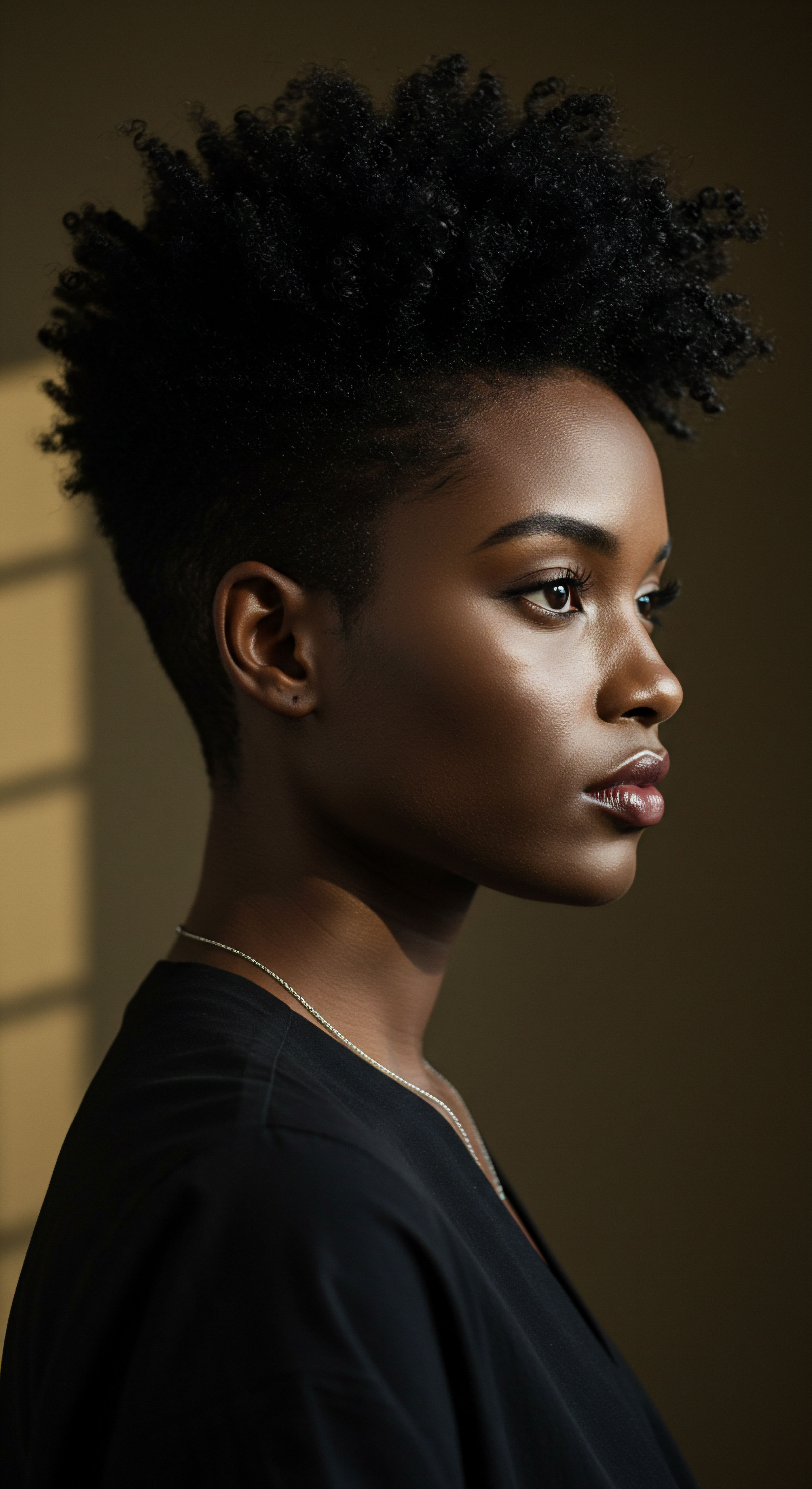
What Happens When Porosity is Misunderstood?
A common misstep in textured hair care arises from a misunderstanding of porosity. For example, applying heavy butters and oils to low porosity hair, with the intention of deep conditioning, can inadvertently lead to product buildup and a greasy feel, as the ingredients simply sit on the surface without penetrating. This can paradoxically leave the hair feeling dry underneath the surface layer.
Similarly, relying solely on lightweight products for high porosity hair, without adequate sealing, results in rapid moisture loss and persistent dryness, despite frequent application. The hair may feel hydrated for a short period, only to revert to a parched state.
Understanding porosity guides product selection and application, preventing issues like buildup on low porosity coils and rapid moisture loss for high porosity strands.
These experiences often lead to frustration, prompting individuals to try an endless cycle of products without addressing the root cause. The hair’s appearance—whether dull, frizzy, or prone to breakage—is often a direct signal of this mismatch between porosity and care ritual. The true art of caring for coiled hair lies in this sensitive attunement, recognizing that the hair’s response to products is not a matter of product failure, but a call for a more aligned approach.
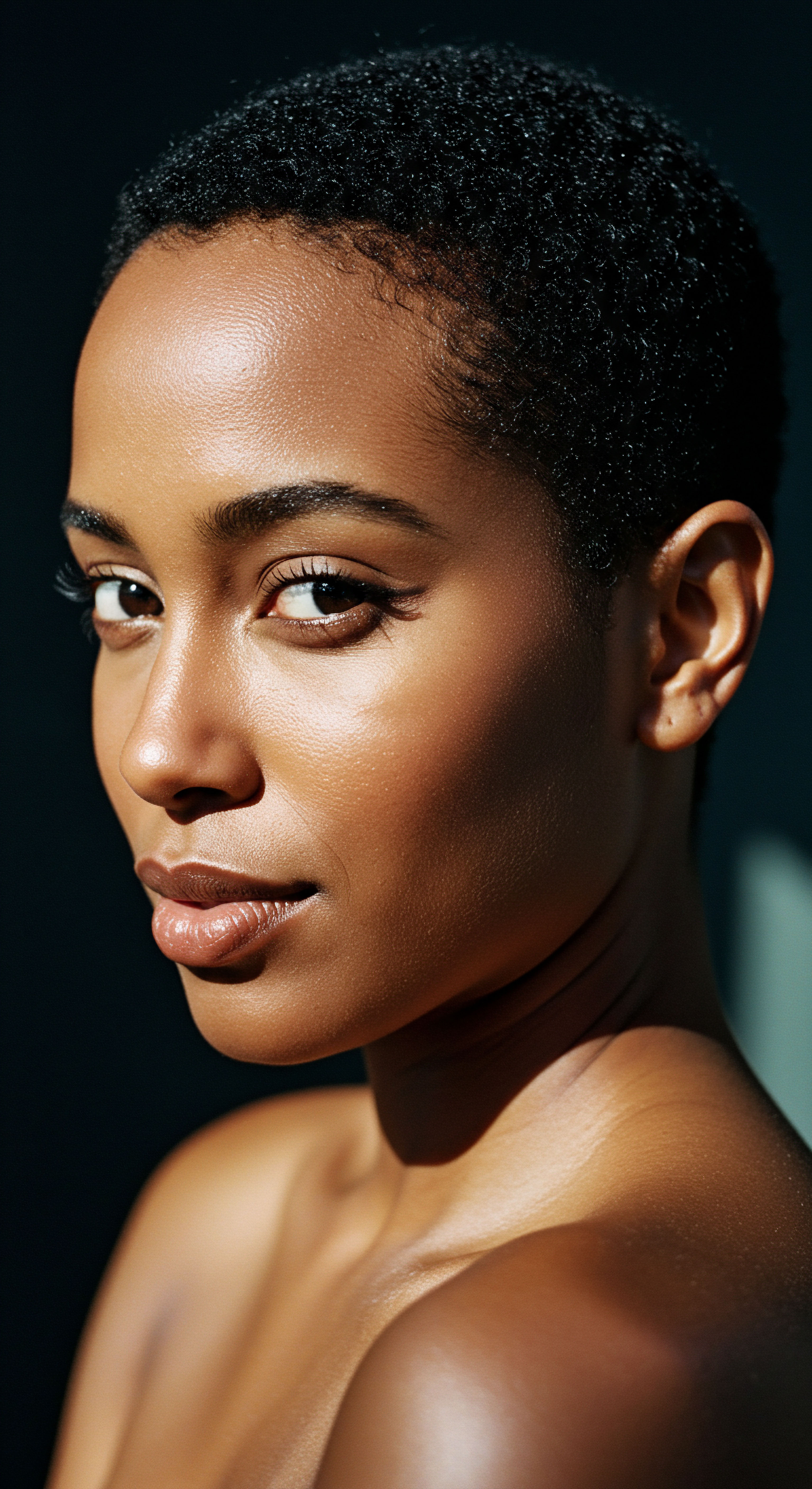
Can Daily Habits Alter Hair Porosity
Indeed, daily habits and environmental factors can significantly influence hair porosity. While genetics establish a baseline, external stressors can progressively alter the cuticle’s integrity, shifting hair towards higher porosity.
- Heat Styling ❉ Frequent use of heat tools, such as blow dryers and curling wands, can lift and damage the cuticle, increasing porosity over time.
- Chemical Treatments ❉ Bleaching, coloring, relaxing, and perming processes chemically alter the hair structure, stripping melanin and proteins, which directly leads to increased porosity.
- Mechanical Damage ❉ Rough brushing, aggressive towel drying, and tight hairstyles can cause friction and physical stress, eroding the cuticle layer and exposing the inner cortex.
- Environmental Exposure ❉ Prolonged exposure to UV rays, wind, chlorinated water, and pollution can degrade the protective cuticle, accelerating porosity.
These cumulative effects highlight the importance of protective measures and gentle handling in daily routines. Minimizing harsh treatments, shielding hair from extreme environmental conditions, and employing mindful styling practices contribute to maintaining cuticle health and, consequently, optimal porosity. The hair’s capacity for absorption is not a static state, but a responsive one, shaped by the rituals we choose.

Relay
To truly comprehend how porosity shapes the absorption of products for coils, we must journey beyond surface-level observations and into the intricate interplay of biological architecture, historical wisdom, and contemporary scientific inquiry. This exploration reveals a profound connection between the hair’s fundamental structure and its response to the world of topical applications, a connection that has been understood, in various forms, across cultures for centuries. The coiled nature of textured hair, often viewed through a simplistic lens, presents a complex biological reality that directly influences its porosity and, by extension, its thirst for nourishment.

The Geometry of Coils and Cuticle Behavior
The very shape of the hair follicle, typically asymmetrical or oval for coiled strands, dictates the hair’s spiral growth pattern. This unique geometry results in twists and turns along the hair shaft, which inherently causes the cuticle layers to be slightly raised at various points, even in their healthy, virgin state. This characteristic elevation, while not necessarily indicative of damage, means that coiled hair often possesses a naturally higher porosity compared to straight hair.
The tighter the coil, the more pronounced these natural points of cuticle lift can be. This structural reality has profound implications for product absorption.
Consider the path a product molecule must navigate. For straight hair with a relatively flat cuticle, the journey is more direct. For coiled hair, the path is a labyrinth of curves and potential openings.
This inherent structural difference means that product formulations designed without this nuanced understanding may not perform optimally. A product that easily penetrates a straight strand might encounter resistance or, conversely, rush through a coiled strand, failing to deposit its beneficial components where they are most needed.
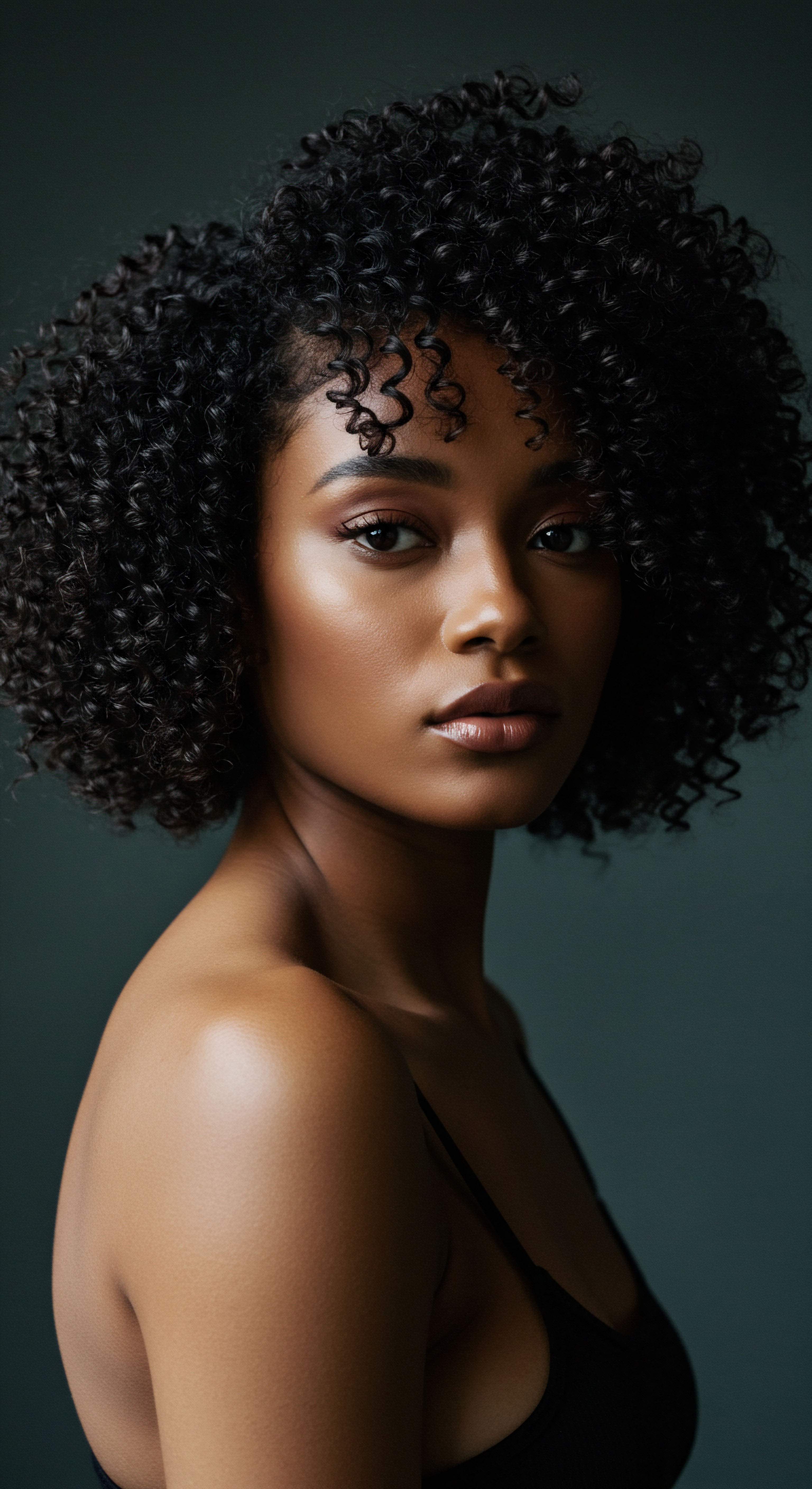
Beyond the Surface Layer How Molecules Move
The absorption of a product is not merely about the cuticle opening or closing; it is a sophisticated dance of molecular size, chemical properties, and the hair’s internal pathways. The hair fiber is not a solid, impermeable rod. Beyond the cuticle lies the cortex, the main bulk of the hair, composed of keratin proteins. The cell membrane complex (CMC), a continuous structure between cuticle cells and within the cortex, acts as a significant conduit for substances to penetrate.
Research indicates that smaller molecules, particularly those that are hydrophilic (water-attracting), tend to penetrate the hair more readily, often via the protein-rich δ-layer within the CMC. Conversely, larger molecules or those with different chemical affinities may interact more with the hair’s surface, forming a protective film. This distinction is critical for coiled hair, where ensuring deep hydration often necessitates products with ingredients capable of reaching beyond the outermost layer. For instance, studies on the penetration of hydrolyzed proteins have shown that smaller oligopeptides (less than 1,000 daltons) can indeed reach the cortex, offering internal repair and conditioning benefits.
The intricate geometry of coiled hair, with its naturally raised cuticles, profoundly shapes product absorption, requiring a sophisticated understanding of molecular pathways and ingredient properties.
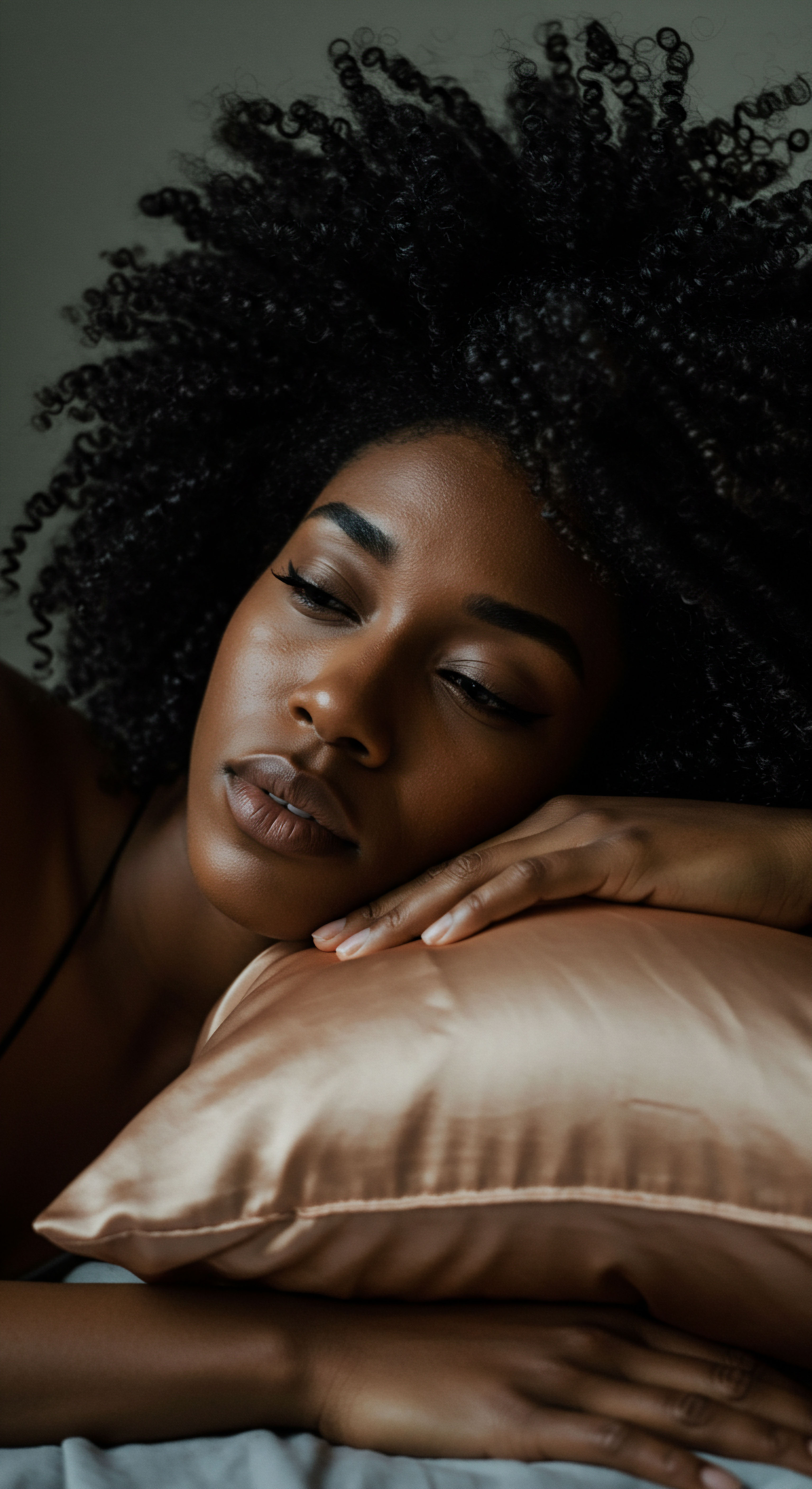
A Challenging View on Protein and Porosity
While conventional wisdom often recommends protein treatments for high porosity hair to “fill gaps” in the cuticle, a fascinating, less commonly discussed perspective suggests a more cautious approach. A study published in the Journal of Cosmetic Science revealed that excessive protein treatments can actually lead to further moisture resistance in low porosity hair. This challenges the simplistic notion that protein is universally beneficial for all porosity types, or even for all high porosity hair.
Dr. Aisha Strickland, a trichologist specializing in African American hair care, cautions that many individuals with low porosity hair unknowingly over-proteinate their hair, leading to increased dryness and brittleness.
This finding suggests a more nuanced understanding of protein’s role. While some protein can indeed strengthen compromised high porosity strands, an overabundance, particularly in low porosity hair, may create a rigid, less flexible structure that impedes the very moisture it seeks to retain. It highlights the importance of observing one’s hair response closely, rather than adhering to blanket recommendations.
For high porosity coils, a balanced approach, perhaps alternating protein treatments with deep moisturizing ones, may be more effective than constant protein application. For low porosity coils, a focus on moisture-rich, protein-free formulations might be the preferred path to true hydration.
This complex interaction underscores that hair care is not a static formula, but a dynamic, responsive process that requires continuous observation and adjustment.
| Porosity Type Low Porosity |
| Cuticle Characteristics Tightly packed, flat scales |
| Product Absorption Resistant, products sit on surface |
| Product Retention Retains well once absorbed |
| Porosity Type Normal Porosity |
| Cuticle Characteristics Balanced, moderately open scales |
| Product Absorption Steady, balanced absorption |
| Product Retention Retains well |
| Porosity Type High Porosity |
| Cuticle Characteristics Raised, chipped, or gapped scales |
| Product Absorption Absorbs quickly |
| Product Retention Loses quickly |
| Porosity Type Understanding these interactions is key to tailoring effective hair care. |
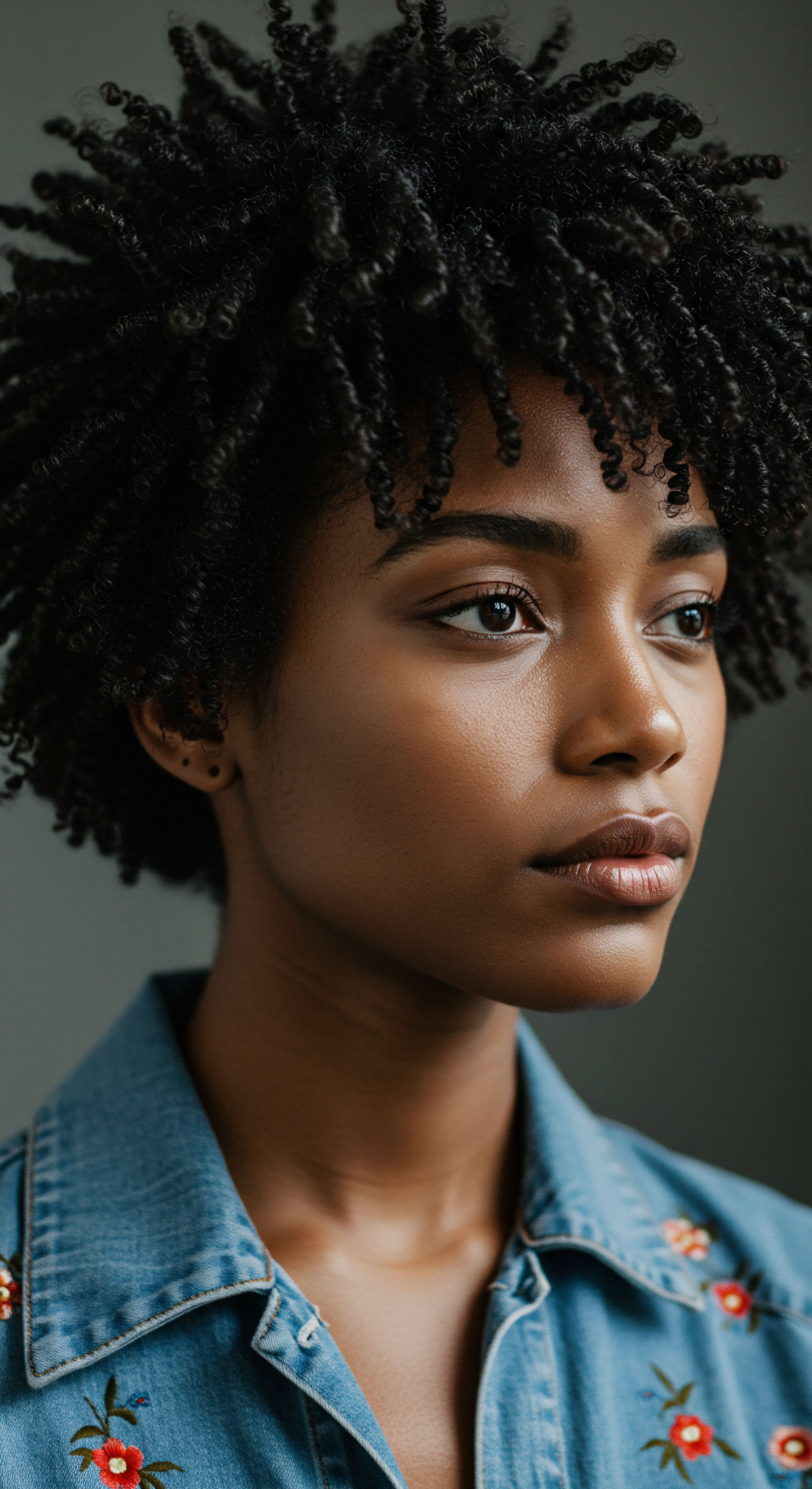
Cultural Wisdom and Porosity
Long before modern scientific instruments allowed us to peer into the microscopic world of the hair cuticle, traditional hair care systems, particularly within African communities, intuitively understood the principles that porosity now explains. Practices of “hair mapping” in regions like Chad and Somalia, centuries ago, considered not only curl pattern but also density, elasticity, and how hair reacted to its environment and products. This holistic understanding, passed down through generations, often involved techniques that align remarkably with current scientific recommendations for different porosity types.
For instance, the use of heavier butters and oils like shea and castor in historical practices for certain hair types aligns with the needs of high porosity hair to seal in moisture. Similarly, the emphasis on sealing practices and protective styling reflects an understanding of how to manage moisture loss from hair that readily absorbs but struggles to retain. These traditions, rooted in deep observation and communal knowledge, offer a testament to the enduring wisdom of understanding hair’s intrinsic properties, regardless of the scientific nomenclature. They underscore that effective hair care is often a synthesis of scientific insight and cultural heritage.
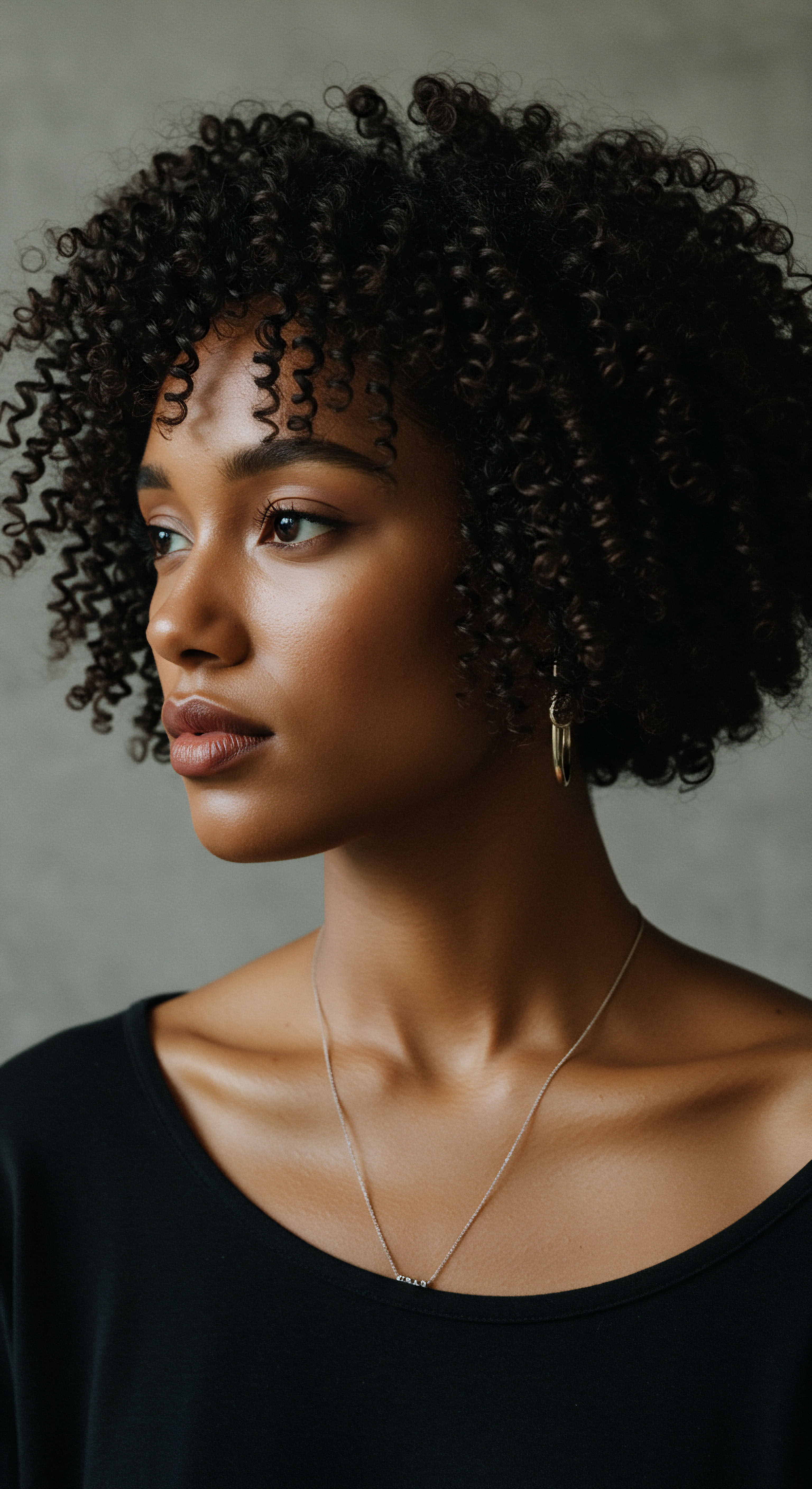
The Unseen Influence of the Medulla
While much discussion around porosity centers on the cuticle and cortex, the hair’s innermost layer, the medulla, presents another intriguing dimension to absorption. Often described as a porous, sometimes discontinuous structure, its exact function has remained less clear in cosmetic science. However, recent research is beginning to shed light on its potential role.
A study on “Hair Medulla Care” suggests that specific chemical treatments can alter the medulla’s structure, allowing compounds to pass through it, regardless of their charge or hydrophilicity. This opens a new avenue for understanding how products might be designed to reach the deepest parts of the hair fiber, potentially enhancing benefits that go beyond cuticle-level interactions.
This area of ongoing research suggests that our understanding of product absorption may continue to deepen, moving beyond the familiar cuticle-cortex interaction to include the medulla as a target for specialized treatments. For coiled hair, which often battles dryness at its core, this deeper penetration could signify a new frontier in effective moisturization and conditioning.
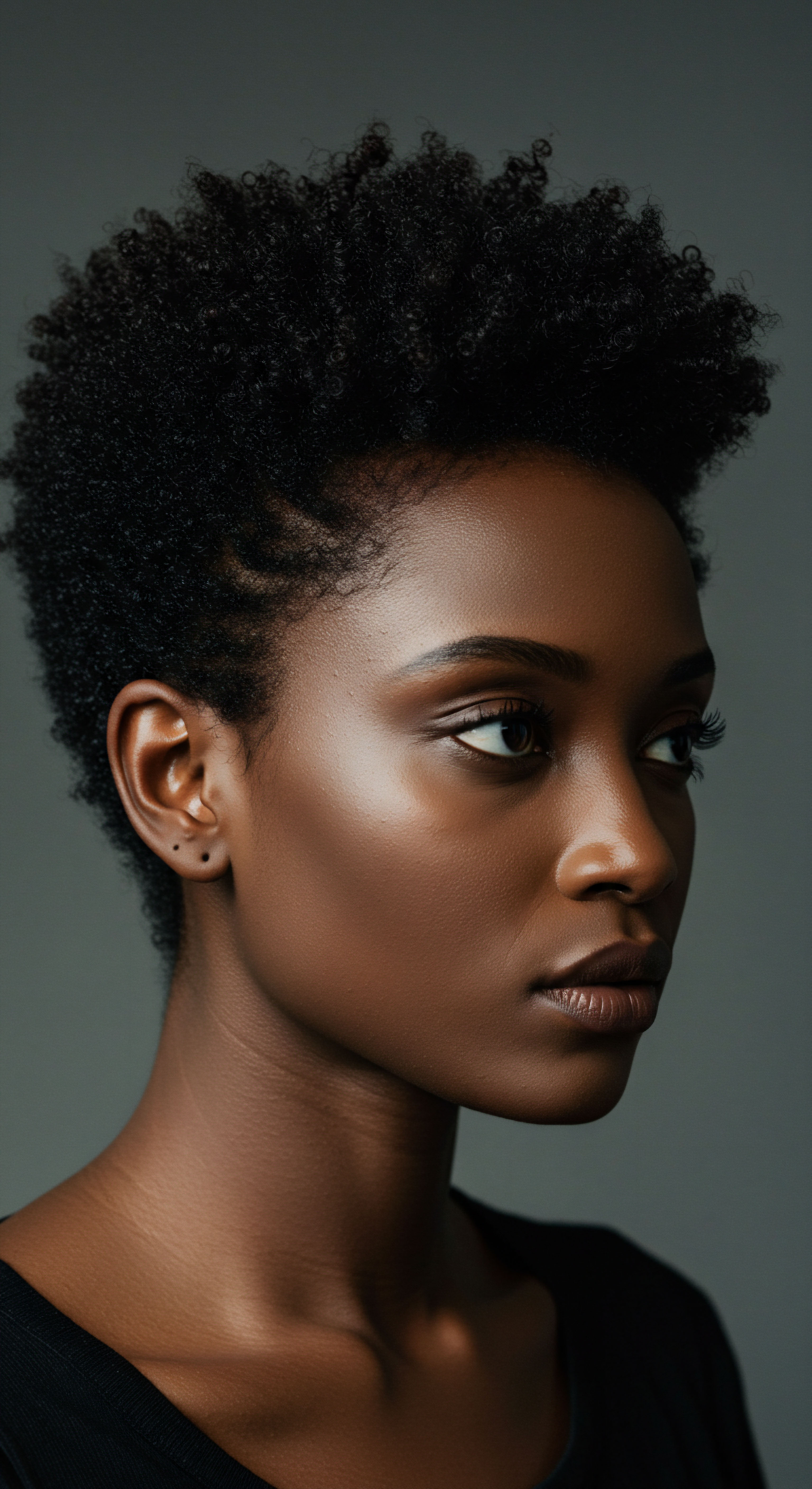
Reflection
The journey through hair porosity, particularly for coils, reveals a profound narrative of connection—to our biological selves, to ancestral wisdom, and to the ever-unfolding discoveries of science. It invites us to move beyond the superficial, to listen to the quiet language of our strands, and to respond with a gentle, informed hand. This understanding transforms hair care from a series of prescriptive steps into a living, responsive dialogue, where every product choice, every ritual, becomes an act of intentional nourishment. Our coils, in their glorious diversity, are not merely textures to be managed, but living expressions that respond with grace when truly understood.

References
- Davis-Sivasothy, Audrey. The Science of Black Hair ❉ A Comprehensive Guide to Textured Hair Care. SAJA Publishing Company, 2011.
- Robbins, Clarence R. Chemical and Physical Behavior of Human Hair. 5th ed. Springer, 2012.
- Kaushik, Vaibhav, et al. “Benefit of Coconut‐Based Hair Oil via Hair Porosity Quantification.” International Journal of Cosmetic Science, vol. 44, no. 3, 2022, pp. 289-298.
- Pinto, Rita, et al. “Hair porosity ❉ Understanding, measuring, and using it to care for your hair.” International Journal of Cosmetic Science, vol. 42, no. 2, 2020, pp. 135-145.
- Strickland, Aisha. “The Low Porosity Awakening ❉ Revolutionary Insights for Black Hair Exc.” Journal of Cosmetic Science, 2024.
- Kaushik, Vaibhav, et al. “Characterization of damage in the hair cortex caused by surfactants during routine washing.” Journal of Cosmetic Science, vol. 59, no. 1, 2008, pp. 19-32.
- Nishimura, Shinya, et al. “A New Approach to Obtain Attractive Hair “Hair Medulla Care”.” Journal of Community Medicine and Health Research, vol. 5, no. 1, 2024, pp. 1-7.
- Dias, Maria Fernanda Reis. “Hair Cosmetics ❉ An Overview.” International Journal of Trichology, vol. 7, no. 1, 2015, pp. 2-15.
- Kamiya, Atsushi, and Nobuo Shindo. “Structural Analysis of Human Hair Cuticle using Microbeam X-ray Diffraction ❉ Relationship with Effects of Hair Dyeing.” SPring-8 Research Frontiers, 2008, pp. 88-89.
- Gavazzoni Dias, Maria Fernanda Reis. “Hair Porosity ❉ An Overview.” NYSCC, 2020.